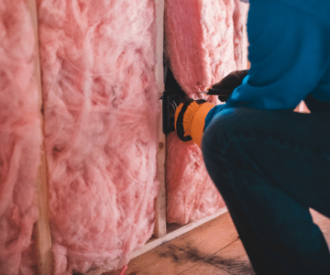Federal funding directory
Federal funding programs available for affordable housing and community development
General guidance for all federal housing programs
As jurisdictions explore potential strategies for funding their local housing strategy, it is important to carefully consider how each funding source will meet local housing needs and how each aligns with local resources and capacity. Key considerations for selecting an appropriate federal funding source include:
Affordable housing activities often rely on multiple federal funding streams, plus state and local sources. This means that projects need to comply with complex and overlapping program requirements. Localities should consider whether they have the capacity and expertise to navigate these requirements on their own or whether they should seek support from an experienced partner, such as a nonprofit, a mission-driven for-profit developer or a public housing authority.
Jurisdictions should consider how to strategically layer federal funds with other resources from state, local, and philanthropic or private investments. These resources are often less restrictive than federal funds and can cover a broader range of activities or assist households that would otherwise be ineligible for federal support. In addition, some federal programs for housing, such as the HOME Investment Partnerships Program and Capital Magnet Fund, require grantees to secure matching funds from non-federal sources.
Even when local funding is scarce, jurisdictions can use other policy tools to help maximize and extend the impact of federally funded housing programs. For example, localities can support the development of rental housing by introducing zoning or property tax incentives, facilitating acquisition projects by establishing a land bank, and improving residential stability through tax abatements.
In response to COVID-19, the federal government authorized several temporary funding sources that can support various housing activities, such as the Coronavirus State and Local Fiscal Recovery Fund, the Homeowner Assistance Fund, and the Emergency Rental Assistance Program. To maximize the impact of these temporary programs, jurisdictions should be aware of the timeline for each program and plan to expend these funds before they expire.
Under the Davis-Bacon Act, construction, rehab, or repair projects funded by some federal housing programs (such as HOME and Community Development Block Grants) may be subject to federal prevailing wage standards. Jurisdictions should determine whether their projects are subject to the Davis-Bacon Act and assess how this might their cost and complexity. In some cases, it may be more efficient to use state or local funds, especially for small-scale projects. Note that the Low Income Housing Tax Credit does not, by itself, trigger the applicability of Davis-Bacon.
Federal funding directory
The NYU Furman Center’s Housing Solutions Lab and Abt Associates developed a directory of available programs to assist localities interested in exploring federal funding options by their use. Click on each tile to view them.

Community development
Community development efforts are an important complement to housing-related investments.

Energy efficiency
Programs that help improve energy efficiency can significantly impact affordability.

Eviction/homelessness prevention
These programs help renters stay in their homes or move to a suitable home.

Home repair
Improving the physical condition of homes can help maintain an adequate supply of housing.

Mortgage/down payment assistance
Several federal resources can offset down payment and closing costs.

Public services
Utility assistance, transportation benefits, and case management services can help households.

Rental development
Increasing the supply of affordable rental housing is key to many localities’ housing strategy.

Rental preservation and rehab
Localities can deploy federal resources to preserve affordable rentals.

Supportive housing
Affordable units that provide additional services to residents with special needs.

